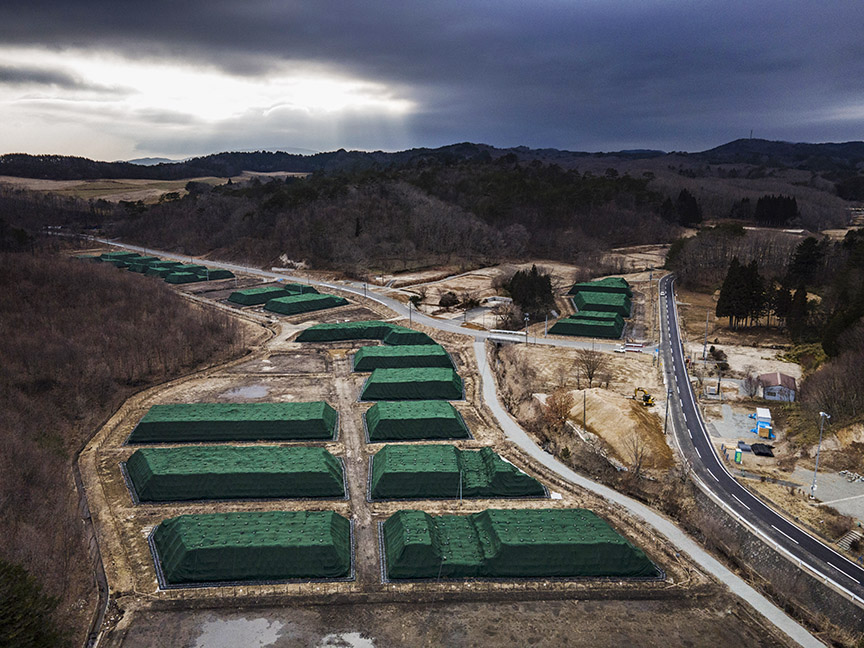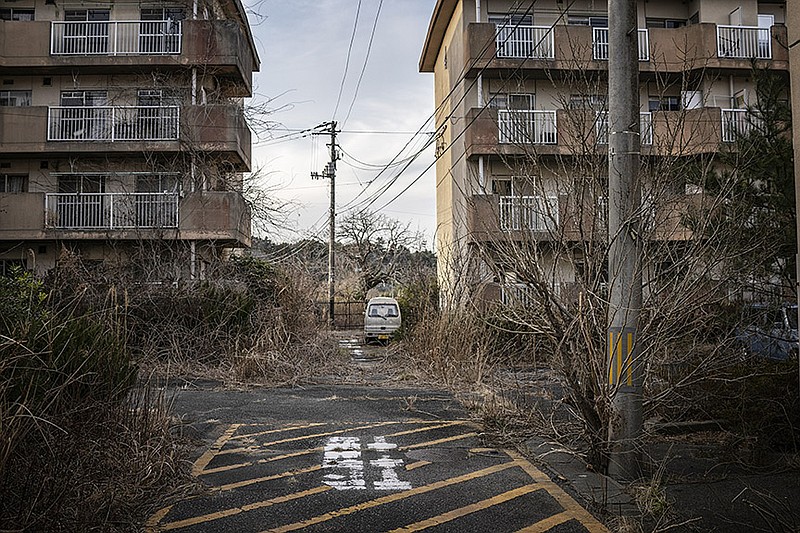Ten years ago this week, the world watched in horror as a nuclear plant with multiple reactors in Fukushima, Japan, melted down on live TV day after day after day - the aftermath of a natural disaster in the form of a March 11, 2011, earthquake and its ensuing tsunami.
Here in the Tennessee Valley, we were especially attentive: The Japanese nuclear plant was a near-twin of the Tennessee Valley Authority's oldest and largest nuclear plant - the Browns Ferry plant in Athens, Alabama, which has three spent fuel pools elevated several stories high and housed in the same secondary containment areas as the plant's three reactors.
We needed to be attentive. A month and a half after the Fukushima disaster, an April 2011 tornado outbreak - 492 tornadoes in the Southeast in the space of about three days - left nearly 360 people dead, twisted miles of electrical grid in Northeast Alabama and Mississippi into enormous steel pretzels and sent all three of Browns Ferry's reactors into "automatic" shutdown.
All nuclear plants are designed to go into automatic shutdown when something goes wrong. It's a safety feature - like a fuse blowing when your circuits are overloaded. But it's not a fail-safe, as Fukushima continues to show us.
In Japan, not even a shutdown prompted by the shaking ground could prevent catastrophe when less than an hour after the quake, two enormous ocean waves swamped the back-up diesel generators, the seawater pumps, the back-up electrical switchgear and a series of batteries in the plant's basement. With no power, the pumped flow of cooling water ceased to surround the pooled hot radioactive spent fuel rods and the reactor cores.
From that point, the dominoes fell fast, and within three days, three of six reactor cores at Fukushima had melted. Explosions ripped away parts of the containment structures. Within hours, mandatory evacuations began in a radius of 12.4 miles. A voluntary evacuation was extended to the next concentric six-mile radius, and 10 days later the Japanese government declared the inner circle a "no-go" area.
Nearly half a million people were displaced, and tens of thousands still can't return as much of the land remains uninhabitable. In March of 2019, the Japan Center for Economic Research conservatively put the full cost of addressing the disaster between $315 billion and $728 billion.
 Mounds of radioactive soil under green tarps in Katsurao, a rural area about 10 miles inland from the nuclear meltdown site in Japan's Fukushima Prefecture, March 6, 2021. Ten years after a devastating earthquake, tsunami and nuclear meltdown, those who have returned are readjusting to places that feel familiar and hostile at once. (James Whitlow Delano/The New York Times)
Mounds of radioactive soil under green tarps in Katsurao, a rural area about 10 miles inland from the nuclear meltdown site in Japan's Fukushima Prefecture, March 6, 2021. Ten years after a devastating earthquake, tsunami and nuclear meltdown, those who have returned are readjusting to places that feel familiar and hostile at once. (James Whitlow Delano/The New York Times)
Meanwhile, the tornadoes ...
After the tornadoes in the Tennessee Valley downed 353 of TVA's monster power towers and ripped out 108 power transmission lines, the 3,400 megawatts of electricity being generated at Brown's Ferry had no place to go. The plant "tripped" and went into automatic shutdown. TVA said the plant operated as it was designed.
We avoided Fukushima-like meltdowns, but it wasn't as easy as TVA first wanted us to believe.
With no electricity (nuclear plants supply themselves power with their own power generation), the plant's three reactors and three spent fuel pools were cooled for at least five days with only diesel generator power to pull in water from the Tennessee River.
However, despite TVA statements at the time that everything functioned as it should, documents the utility was later required to submit to the Nuclear Regulatory Commission showed that two of the plant's eight diesel generators malfunctioned for about 40 and 50 minutes. And that's not all.
Reactor operators became distracted while manually operating cooling water flow, and water began boiling off of one reactor faster than cooling water could replace it.
Additionally, a valve failed, a diesel-driven fire pump failed, the diesel-driven generator for the security station failed, the warning sirens were lost, power to the chemical lab was lost and at least one of the emergency diesel generators keeping cool water flowing to Unit 1 shut down because of voltage fluctuations caused by a fluid leak after a brass fitting broke.
So much for the TVA claim that "the equipment worked as designed."
The water in the reactor boiled low enough to trigger another shutdown alarm in the control room, said then-TVA spokesman Ray Golden, but boiling water still covered the reactor fuel.
After the tornadoes, TVA spent nearly $200 million to replace the destroyed power lines and another $95 million to buy replacement power, as Browns Ferry was unable to resume full power generation for weeks.
At that point, Browns Ferry was already under heightened scrutiny by the NRC: A cooling water valve failed to operate during a routine manual shutdown the previous fall, and it then came to light that the valve may not have functioned for 18 months before the tornado outbreak.
By July 2013, TVA had been cited by the NRC nine times in three years for incidents at Browns Ferry alone. Watts Bar and Sequoyah had more than their fair share of citations, as well, and at one point, all three of the plants were under one or another of NRC's warning ratings, including Browns Ferry's "red" finding - NRC's most serious violation short of ordering a plant be shut down.
Today in Fukushima, tomorrow here
Of course, things were - and are - much worse in Japan.
Around the Fukushima Daiichi plant to this day, plastic bags of radioactive waste remain piled up on vacant land, and radioactive soil sits in massive above-ground bunkers in temporary waste sites. What will happen when those plastic bags eventually degrade?
Many streets are lined only by the remains of foundations. Fields that once produced pumpkins, radishes and spring onions are fallow. In the forests, scientists have found evidence of lingering radiation. A government proposal to release about one million tons of contaminated water into the sea has rightfully riled the region's fishermen.
There are and have been many lessons from Fukushima.
The easiest would be to avoid building any more nuclear plants.
And, yes, TVA does have a project proposal on the table right now - the 935-acre Clinch River small modular reactor site in Oak Ridge.
TVA and nuclear proponents say the project would help launch a new generation of "clean energy" nuclear plants.
Ask the Fukushima folks about "clean" nuclear energy.
Opponents of the project already are fighting the proposal, urging TVA not to spend more money on even planning nuclear plants (the utility has abandoned at least 13 nuclear reactors, often after wasting billions of dollars). Instead, opponents argue we ratepayers should insist TVA invest our money in renewable energy like solar and wind power, the costs for which are dropping rapidly while many reactor projects are years behind and billions over budget.
One thing is certain. Climate change will demand power made from something other than fossil fuel, and that something other than fossil fuel includes our existing - not new, but existing - nuclear plants. Climate change also will demand hardening whatever power plants and grids we maintain now and build going forward.
Fukushima's lessons are and will be invaluable.
